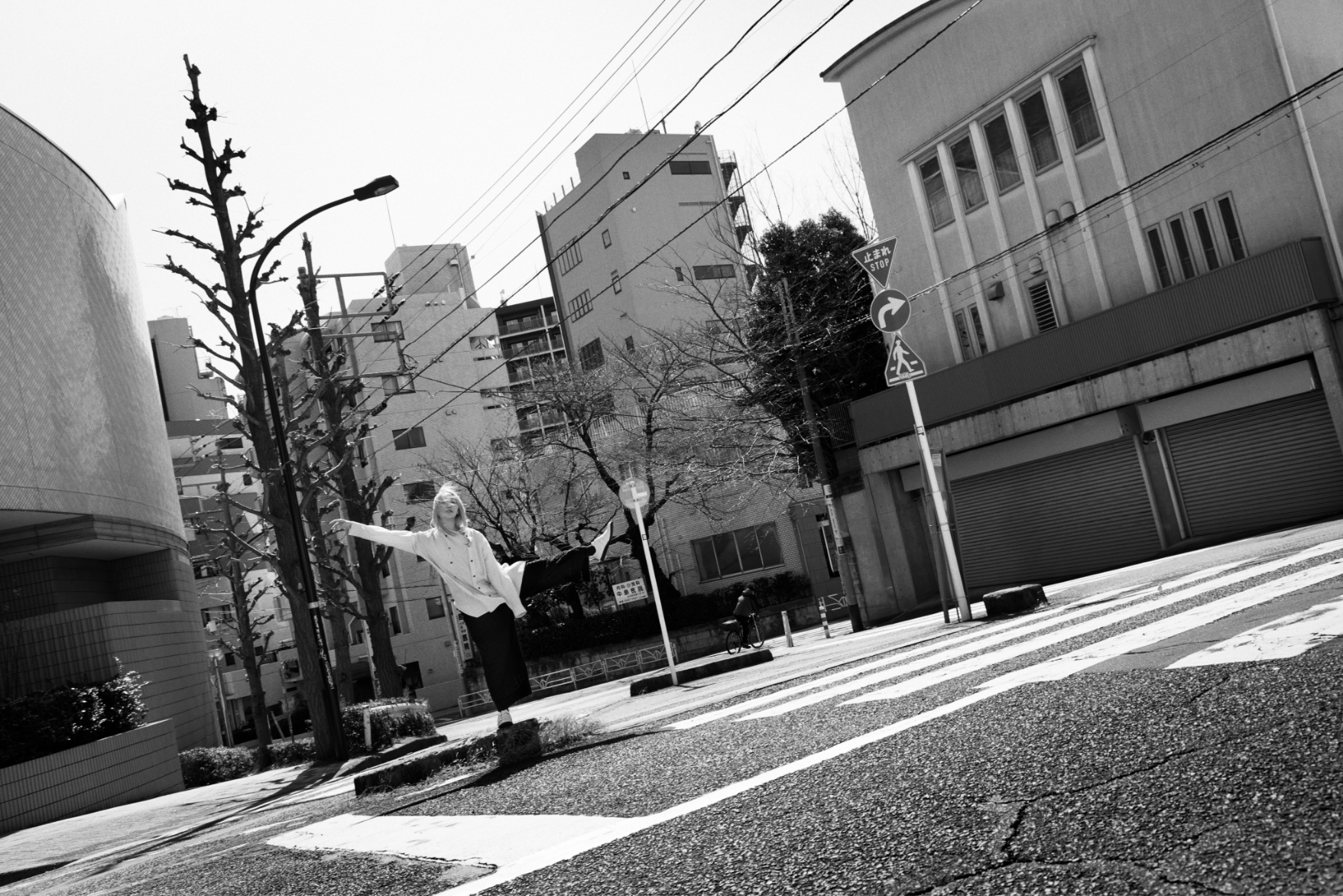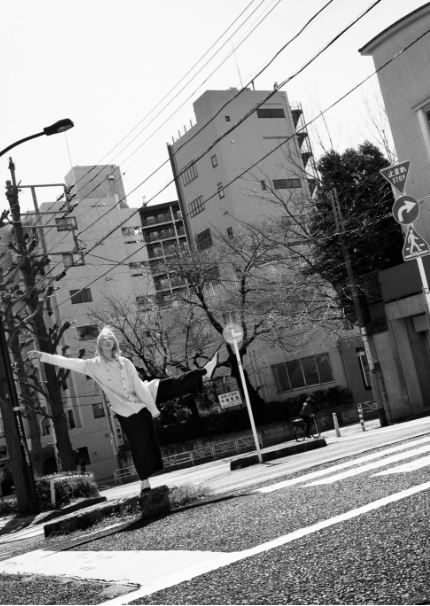- Photo
- Kazumi Kurigami
- Text
- Hirofumi Kurino
- Director
- Sato Takayoshi (OGYA inc)
- Stylist
- Keisuke Baba
- Model
- YACO, Jun Niioka(BARK IN STYLE)
以前照片被定位為講述真相的工具,讓瞬間的美與剎那的情感固定下來。…也被相信了。但真的是這樣嗎?照片是結果,前後只能由觀眾想象(或誤解)。照片既不公平也不解放。有時會將對象物特殊化或極端限定。初期肖像照片記錄的王侯貴族和富裕階層的身影,甚至看起來像照片這一現代裝置的“王權神授說”證明。
也就是說,照片作為特權化的工具也發揮了作用。可以說被拍的人是特別的。時尚一直到某個時期都在其背景下。
攝影家成為職業,照片被發表的“場”被構築擴大,成為藝術的一種類型,另一方面攝影機本身變得容易入手,從某種意義上來說,照片的民主化正在進行中。現在放眼望去,隨著智慧型手機的發展和普及,“拍攝”成了理所當然的行為。自拍、Instagram、投稿、社交媒體的普及正在改變照片的存在方式。現在是誰都會拍的人,也是被拍的人。除了作為發表的場所長期保持特權性的雜誌等的存在之外,現在全世界的人們都將自己媒體化了。
那麼攝影師這個職業是怎樣的呢?如果只說前面提到的邏輯的話,在“誰都是攝影師”的時代,傳統的攝影師應該沒有立足之地。
正因為如此,特定的某人的照片才更突出。從某種意義上說,這可能是先驅者的利益。…。
人照一個人。攝影家和被攝體之間的關係也是共犯的吧。“攝影機=槍”的論調由蘇珊·森塔格所知,除了從那裡的單方面(拍攝·Shooting)產生的批判和問題意識之外,在拍攝的一方和被拍攝的一方都提到了某種“愛”的攝影家是操上和美(克裡加米·kazumi)。
現在89歲的攝影師仍然精力充沛地進行著攝影。
如果被要求強迫用一句話來表達自己的操控,我想舉出“自我意識”這一關鍵詞。在操上拍攝的龐大作品群中,人也被他的肖像照片所吸引。在一次對話中,操上說了“被理解了我就麻煩了”。或者說,在從事制約和要求較多的廣告工作的過程中,他說‘我付了高額的報酬,讓我自由做’。一瞬間,相反呢?這樣的發言,即使如此,在操作上的委託還不會中斷,或者即使提高委託人自身的障礙也會訂購工作的背景可以理解。
如果期待只有操上和美才能拍到的結果的話,那就交給他了。
與操上和美多工作的是北野武。北野對我來說是一個強烈的自我意識的人。而且北野作為電影服裝和個人都穿著的是YOSHIYAMATO的母親。
乍看之下,看起來很安靜,但其底部充滿了無法可見的濃厚黑暗的YOSHIYAMATO的福,通過著手,超過了單純的福。
於是操上和美將兩人所產生的結果變成了一種魔法。
那個魔法被揭示在商業設施中,由觀眾即來館者感知。來館者被擺放在館裡的袋子吸引,成為客人。也許會超越客人單純購買並擁有物品的交易關係。
明明應該被目擊,卻就這樣成為了共犯關係的好人。
人造城市,城市造人,人裹著母親,攝影家帶著意願將其拍攝成圖像。拍攝的東西在館裡公開,人們觀看。畢竟,城市需要有意志的館。
然後,我被這個城市和館養大了。
Once, photography was positioned as a tool for speaking the truth, believed to preserve fleeting beauty or momentary emotion. But is that really the case? A photograph is a result, and what comes before or after it is left to the imagination—or misunderstanding—of the viewer. Photography is neither fair nor liberating. At times, it can exaggerate or severely limit its subject. Early portrait photography of royalty and the wealthy looks, in hindsight, like a photographic endorsement of the "divine right of kings."
In other words, photography has also functioned as a tool of privilege. To be photographed was to be special. And for a certain period, fashion operated within this framework.
As photography became a profession, and as platforms for exhibiting photos were established and expanded, the medium entered the realm of art. At the same time, cameras became more accessible, and photography was, in a sense, democratized. In the present day, thanks to the rise and spread of smartphones, taking photos has become a given. Selfies, Instagram, online posts, and social media are transforming the nature of photography. Today, everyone is both a photographer and a subject. The world's people have now become self-publishing media in their own right, surpassing even traditional magazines that long held the privilege of publication.
So what, then, of the professional photographer?
If we follow the logic above, there should be no place for conventional photographers in this age where "everyone is a photographer."
And yet, this is exactly why the work of certain individuals stands out. It may be a kind of first-mover advantage, but...
People photograph people. The relationship between photographer and subject can also be one of complicity. Susan Sontag is known for comparing cameras to guns, but beyond the criticisms and questions of asymmetry implied in "shooting," photographer Kazumi Kurigami has spoken about a kind of "love" that exists on both sides of the lens.
At 89 years old, he still shoots with astonishing energy and vigor.
If I were forced to describe Kurigami in one word, it would be "self-awareness." Among his vast body of work, it is his portraits that continue to captivate. In one interview, he remarked, "It would be a problem if people understood me."
In his advertising work—full of restrictions and demands—he is also known to have said, "You’re paying me a lot, so let me do it my way."
At first, it seems contradictory. But the steady stream of requests, and clients willing to raise their own standards to work with him, speaks to the context behind those words.
If the expectation is for results only Kazumi Kurigami can deliver, then it makes sense to leave it to him.
Takeshi Kitano is one such frequent collaborator. To me, Kitano is also a person with an intense self-awareness. And the clothes Kitano wears—both on screen and personally—are Yohji Yamamoto's.
Yohji Yamamoto's garments may seem quiet at first glance, but beneath the surface lies a rich, deep darkness, invisible to the eye. Through the wearer, the clothing becomes something more.
Kazumi Kurigami turns the result of that union into a kind of magic.
This magic is displayed inside a commercial space and sensed by the viewers—visitors to the site. Drawn by the garments on display, they become customers.
Perhaps this experience transcends the simple transactions of purchase and ownership.
Something which deserves to be witnessed thus becomes the key to a complicit relationship.
People build cities, cities shape people, people wear clothing, and photographers capture this with intention. The captured image is then exhibited in a venue, and people view it.
In the end, a city needs a venue with purpose.
And I have been raised by this city and its venue.
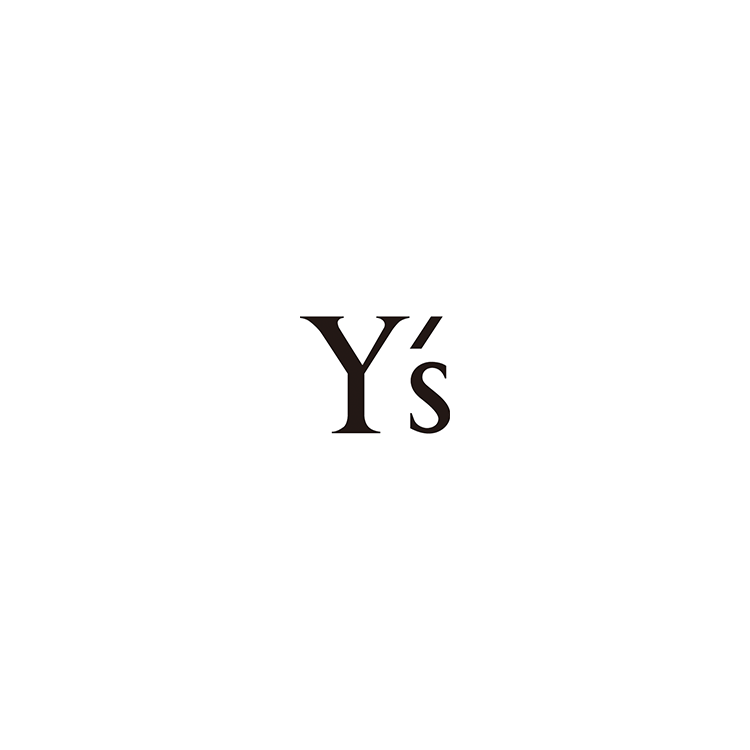
- 品牌名稱
- Y’s
- 樓層
- 3F
- 官方品牌網站
- https://www.yohjiyamamoto.co.jp/ys/
- 電話號碼
- Y’s Information desk
03-5463-1503(至4/24)

- 品牌名稱
- Y’s for men
- 樓層
- 3F
- 官方品牌網站
- https://www.yohjiyamamoto.co.jp/ys-for-men/
- 電話號碼
- Y’s Information desk
03-5463-1503(至4/24)
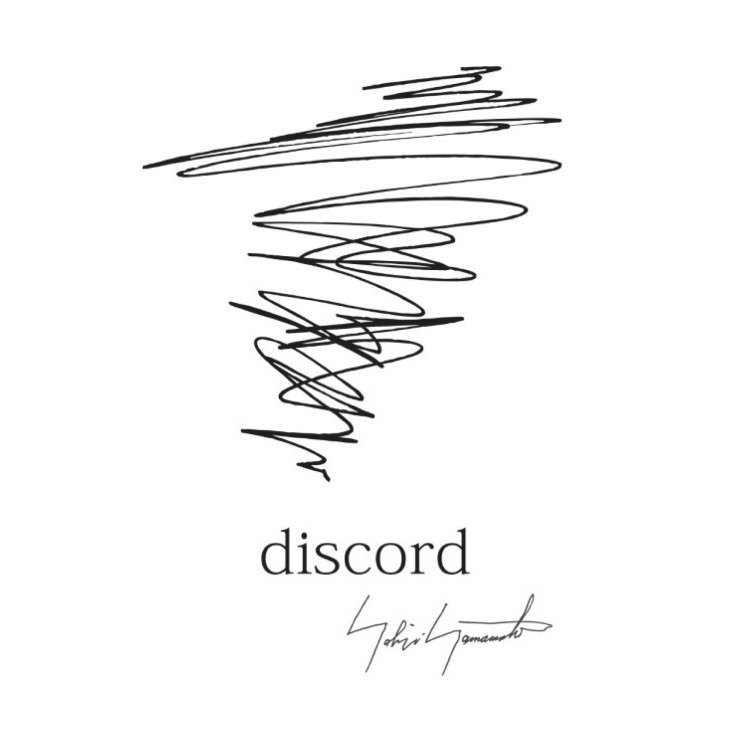
- 品牌名稱
- discord Yohji Yamamoto
- 樓層
- 1F
- 官方品牌網站
- https://www.yohjiyamamoto.co.jp/discord/
- 電話號碼
- 03-6416-5418
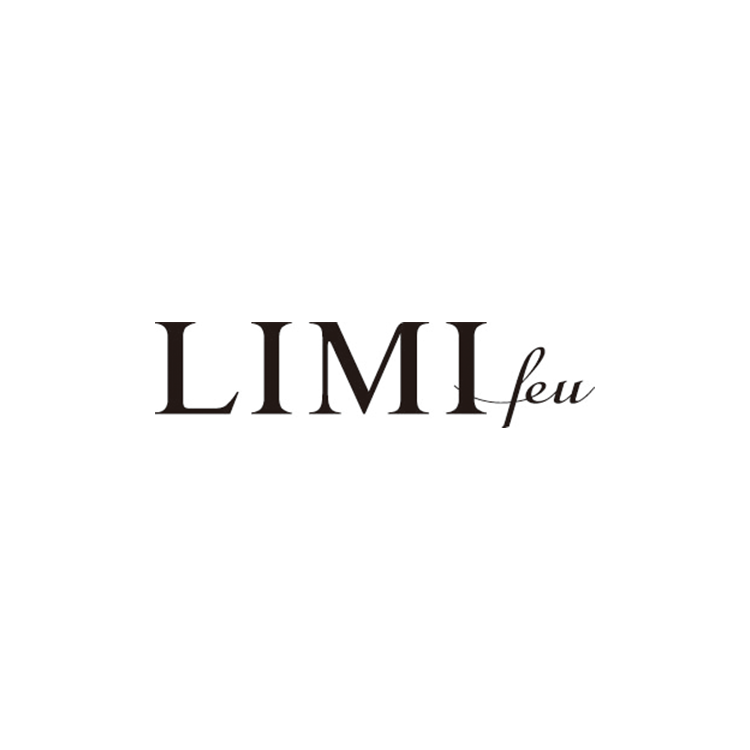
- 品牌名稱
- LIMI feu
- 樓層
- 3F
- 官方品牌網站
- https://www.yohjiyamamoto.co.jp/limifeu/
- 電話號碼
- Y’s Information desk
03-5463-1503(至4/24)

- 品牌名稱
- Ground Y
- 樓層
- 2F
- 官方品牌網站
- https://www.yohjiyamamoto.co.jp/groundy/
- 電話號碼
- 03-6427-8984

- 品牌名稱
- S’YTE
- 樓層
- 1F
- 官方品牌網站
- https://www.yohjiyamamoto.co.jp/syte/
- 電話號碼
- 03-6779-9200
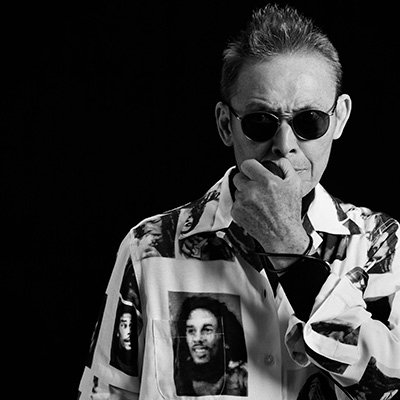
操上和美(Kazumikurigami)
1936年出生於北海道富良野。
主要的寫真集
“ALTERNATES”“游泳的人”“陽與骨”“KAZUMI KURIGAMI PHOTOGRAPHS-CRUSH”
“POSSESSION首藤康之”“NORTHERN”“Diary 1970-2005”“陽與骨II”“PORTRAIT”“SELF PORTRAIT”“DEDICATED”“April”
『50,50 FIFTY GENTLEMEN OF EYEVAN』
主要的個展
「KAZUMI KURIGAMI PHOTOGRAPHS-CRUSH」(原美術館)、
“操上和美時的波特懷舊存在的時間。”(東京都攝影美術館)
「PORTRAIT」(Gallery 916)
《Lonesome Day Blues》(佳能畫廊S)
「April」(takaishii gallery)
「Crigami88」(代官山山Hillside Terrace Hillside Forum)
2008年電影《明膠銀LOVE》導演作品。
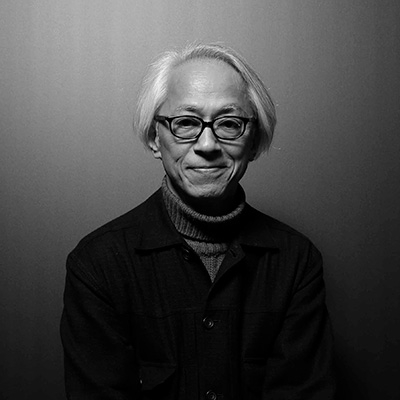
栗野宏文(Hirofumi Crino)
出生於1953年。在大學學習美學,畢業後進入時尚零售業。
經過鈴木、BEAMS,1989年創立了United Arrows。到2008年為止擔任該公司常務董事。在此期間,他曾擔任銷售、採購、管理、新聞和總監,最終是CCO(首席創意官)。
2008年卸任董事後擔任高級顧問。
自2014年起擔任LVMH大獎評委。今年也在繼續。
2020年出版《模式後的世界》。在台灣、南韓也出版了。
